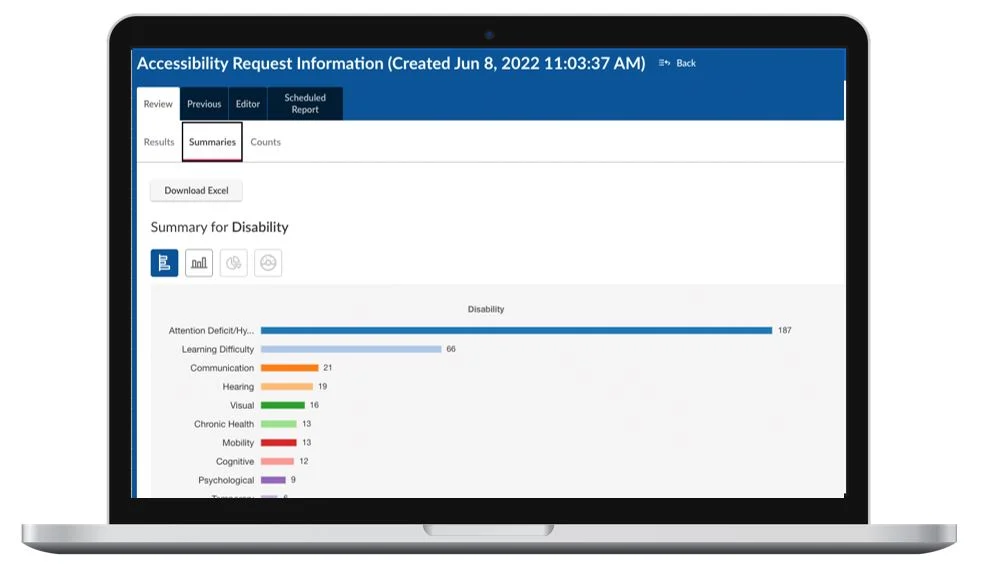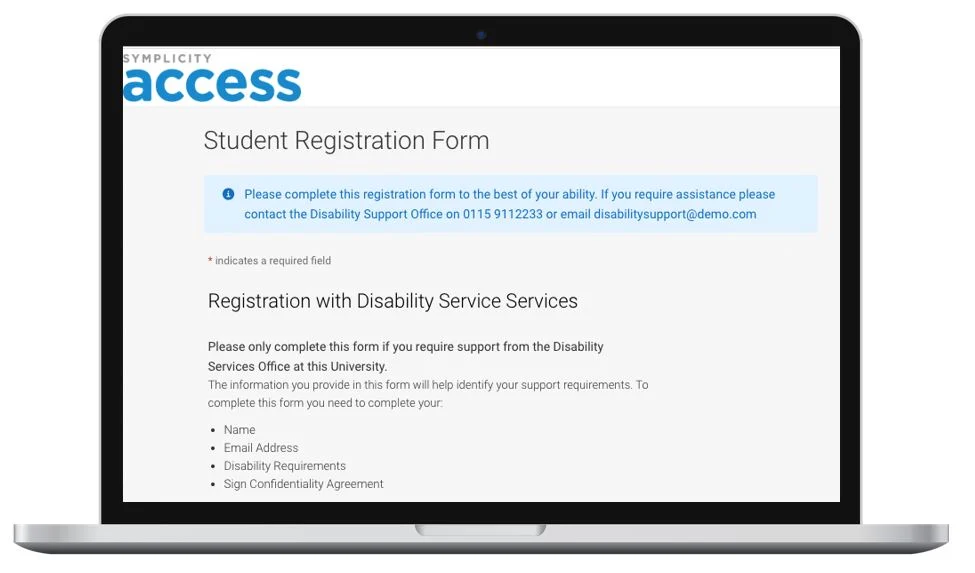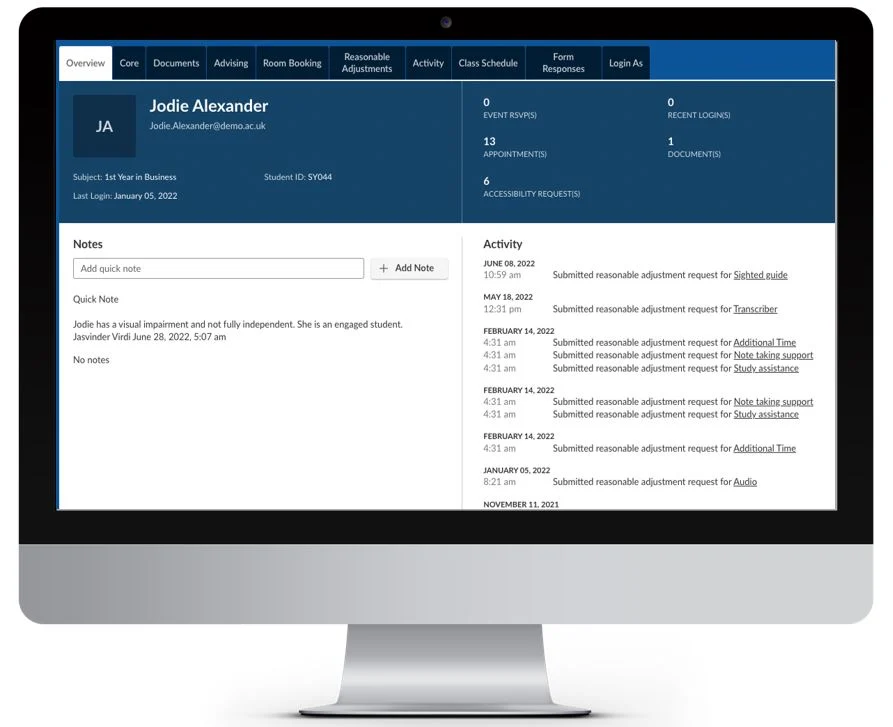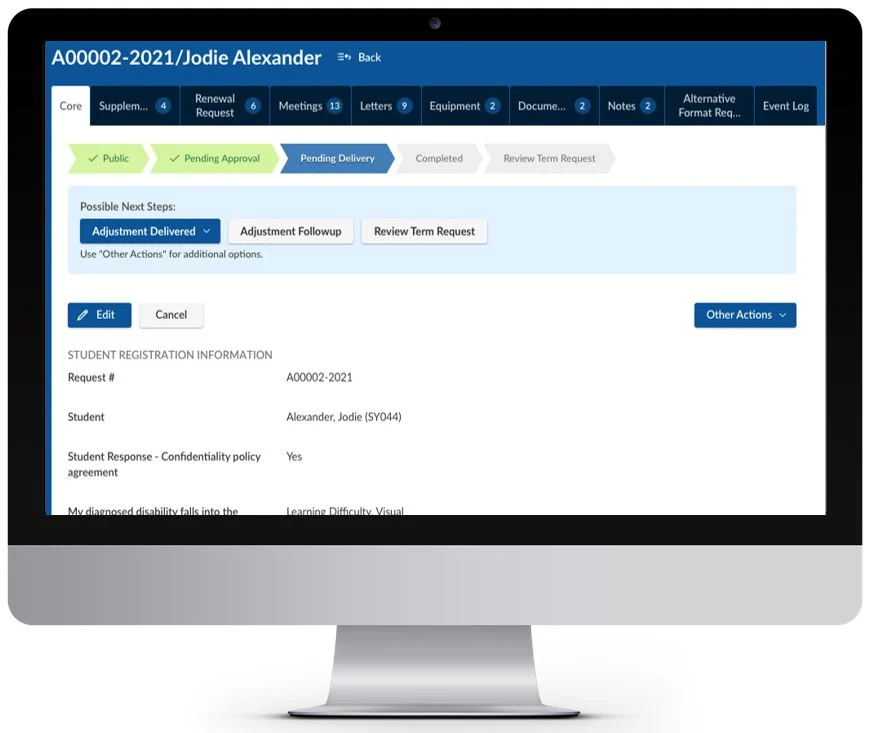
Symplicity Access is a trusted solution for universities and colleges to manage student disability services, enhancing support, automating processes, and improving student outcomes.
Vendor
Symplicity
Company Website




Symplicity Access is a proven software solution specifically designed for higher education institutions to comprehensively manage student disability services. Used by over 200 universities and colleges, it aims to increase student satisfaction and create better outcomes by streamlining the coordination of reasonable adjustments for students with disabilities and specific learning differences across all areas of study and campus life. The platform transforms traditional manual processes by digitizing disability support plans, enabling students to quickly and efficiently request support online, and providing a unified, inclusive experience. It incorporates an e-signature system for staff, students, and academics to formalize agreements on adjustments, eliminating the need for endless paperwork. Symplicity Access facilitates fast and cohesive communication with academic schools and allows for easy tracking of essential accessibility resources, such as exam room availability, note-taking personnel, and device inventory. Furthermore, it offers robust reporting capabilities, enabling disability services teams to generate critical data, analyze trends, understand student cohorts needing the most support, and optimize resource allocation. The system is designed to be user-friendly and engaging, allowing students to seamlessly submit requests, connect with note-takers, and electronically check out assistive devices, ultimately empowering them to navigate their academic journey and prepare for the world of work.
Features & Benefits
- Automated Disability Support
- Digitizes disability support plans and streamlines the request and approval process, eliminating manual tasks.
- Provides students with a fast and efficient way to request support online.
- Eliminates manual processes for approving reasonable adjustment requests.
- Includes an e-signature system for staff, students, and academics.
- Easily tracks accessibility resources like exam room availability, note-taking personnel, and device inventory.
- Robust Reporting & Analytics
- Offers unparalleled reporting features that allow disability services teams to create comprehensive reports and deliver critical data to key stakeholders.
- Analyzes trends to understand student cohorts needing the most support.
- Informs decisions on where to allocate resources effectively.
- Identifies which faculties and schools are most effective at implementing agreed adjustments.
- Enhanced User Experience
- Designed to be easy to use and engaging, transforming the reasonable adjustment request process for students and staff.
- Allows students to seamlessly submit requests online.
- Enables students to connect with note-takers and electronically check out assistive devices.
- Features different, intuitive interfaces tailored for staff, students, and academics.
- System is mobile adaptive for accessibility on various devices.
- Seamless IT Integration
- Connects into the wider digital ecosystem of a university, ensuring smooth data flow and coordination with existing systems.
- Integrates with student information systems (SIS) through web services, APIs, and sFTP.
- Connects with Google or Microsoft Outlook calendars to display accurate staff and exam room availability.
- Pulls through course data, tutor and academic information, and student profile photos.
- Comprehensive Case Management & Communication
- Provides an integrated disability support plan and a seamless end-to-end case management process for efficient operations.
- Offers an integrated disability support plan.
- Facilitates seamless end-to-end case management.
- Includes a comprehensive communication toolset for sending letters, email, SMS, newsletters, and announcements.
- Improved Student Outcomes & Wellbeing
- Focuses on enhancing student satisfaction and creating better outcomes by providing integrated support and secure communications.
- Aims to enhance student wellbeing.
- Contributes to increased student retention.
- Leads to enhanced disabled student outcomes.
- Ensures secure and optimized communications.
- Helps reduce the impact of disabilities on learning.